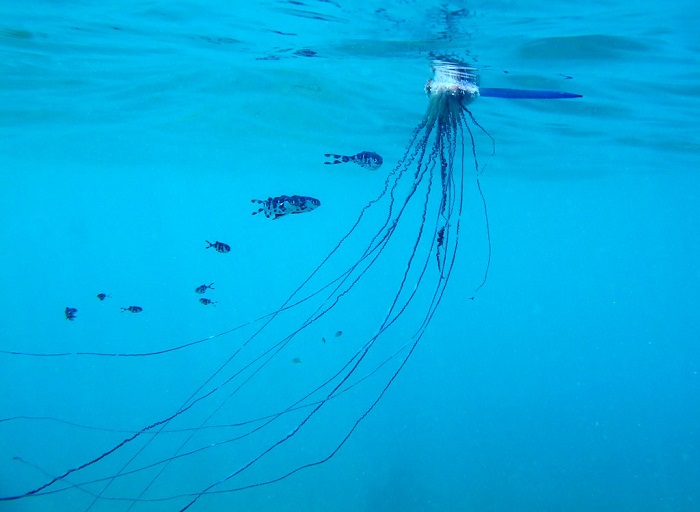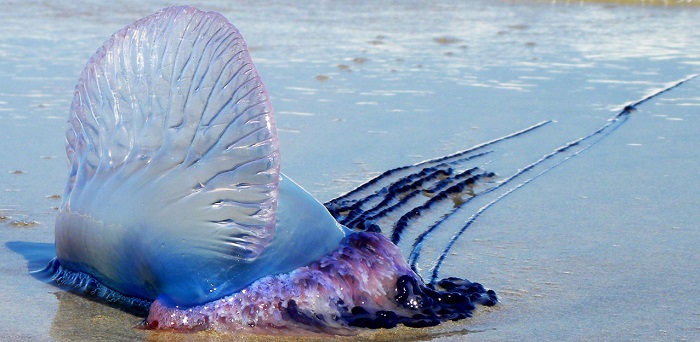
The Department of Fisheries (DOF) of Malaysia has issued a warning after a a venomous jellyfish species has been seen washed up on shores of Malaysian beaches in the state of Terengganu recently.
The Physalia physalis, also known as the deadly Portuguese Man O’War jellyfish has a poisonous sting, which can be fatal.
The marine hydrozoan which is a new species of jellyfish was found in the shores of Pantai Pulau Kekabu in Marang, Pantai Rhu Sepuluh and Pantai Bari in Setiu by several Australian tourists who were at the beach.
“Apart from the 11 already dead along the beach, 10 more were found in the water. We have advised the locals including tourists to be careful and stay away from the water,” Civil Defence Force (APM) officer Captain Mohd Zabri said.

The Portuguese man o’ war is often thought of as a type of jellyfish, but it is actually a species of siphonophore — a group of marine organisms that are closely related to jellyfish.
The man o’ war gets its name because its balloon-like float resembles an 18th-century Portuguese warship under full sail. The float may be blue, violet or pink and rises up to 6 inches above the waterline.
Below the float, a Portuguese man o’ war has long strands of tentacles and polyps that grow to an average of 30 feet and may extend by as much as 100 feet.
The tentacles contain stinging nematocysts, microscopic capsules that are loaded with coiled, barbed tubes which deliver venom capable of paralyzing and killing small fish and crustaceans.
The species, whose feeding tentacles can go up to 160 feet long, are usually found in the Atlantic Ocean, Indian Ocean, and the Pacific Ocean.
Its tentacles contain thousands of “nematocysts” used for defence against predators. It’s powerful sting can cause severe pain to its victims. These deadly jellyfish can sting even after they die.











